Walking out of Lime Street Station in Liverpool you would be forgiven for thinking you had stepped into a 19th-century acropolis. The weight and wealth of empire hangs heavy in the air. Saint George’s Hall, that great neo-Grecian temple, fills the view, flanked by two bronze equestrian statues of Queen Victoria and Prince Albert. The Duke of Wellington surveys you from his column and at the far end stands Liverpool’s grand and imposing temple to art, the Walker Art Gallery.
For three years, the Walker’s collection of medieval, Renaissance and baroque art has been removed from display as the galleries undergo a £4.5 million facelift – though one which has by no means been purely cosmetic. The curators – Kate O’Donoghue and Nicola Scott, looking after fine and decorative arts respectively – have also had to consider how to present Old Masters in an age more critical of empire.
Though it is located on William Brown Street, named for one of Liverpool’s most notorious 19th-century slave owners, the Walker’s collection of Old Masters has its origins with the early abolitionist, William Roscoe (1753–1831). Roscoe acquired works with an eye towards public education, writing that ‘their value chiefly depends on […] the light they throw on the history of the arts’. Particularly notable was his then-unfashionable taste for early Italian works by the likes of Simone Martini and Ercole di Roberti; his collection included fresco fragments he thought to be by Giotto (now attributed to Spinello Aretino). However, his dreams of setting up a public collection were not to be. In 1816, with the threat of bankruptcy looming, he was compelled to sell. Fortunately, a large portion was bought by his friend William Rathbone, who bequeathed them to the Liverpool Royal Institution, later loaned and then given to the Walker. Subsequent paintings by Rembrandt, Murillo and Titian have bolstered these holdings, making it one of the finest and most varied collections in the United Kingdom outside London.
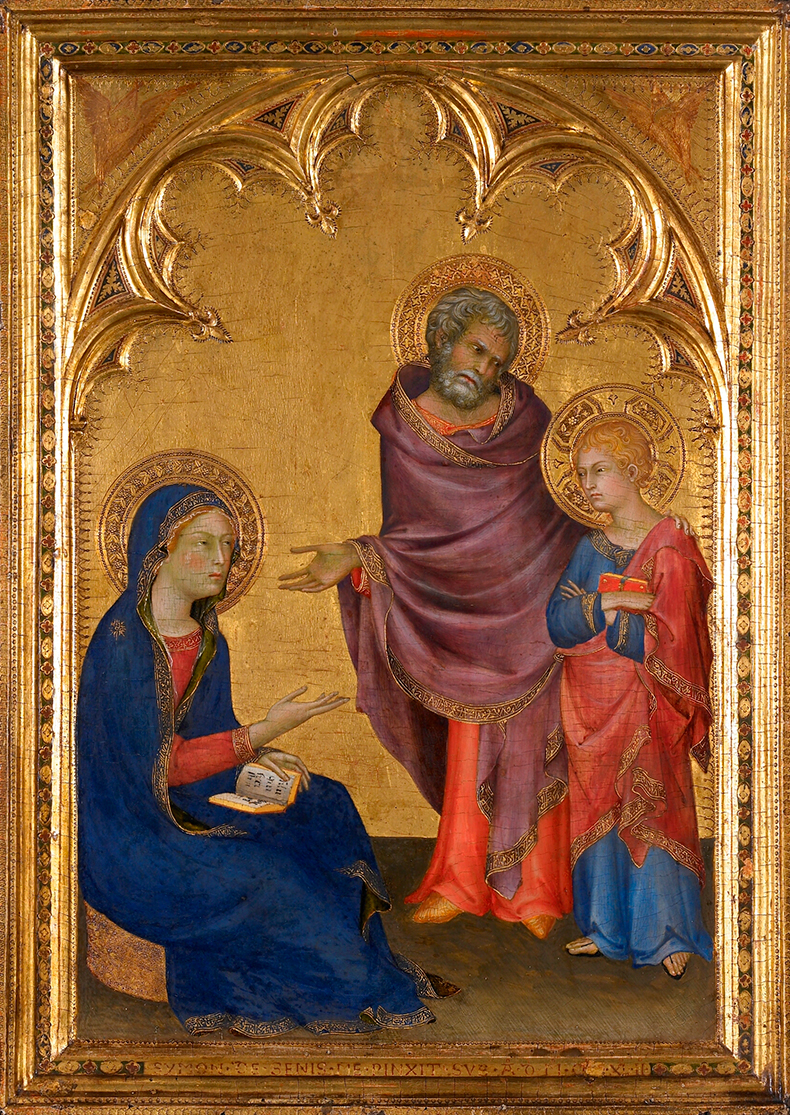
Christ Discovered in the Temple (1342), Simone Martini. National Museums Liverpool/Walker Art Gallery
‘Renaissance Rediscovered’ – the name the Walker has given to this rehang – is comprised of four gallery spaces, set roughly chronologically but with an emphasis on new narratives relating to race, gender and sexuality. In addition, a new ‘works on paper’ gallery exhibits for the first time a rotating display of the Walker’s 8,350 drawings, prints and watercolours – its inaugural incarnation includes Renaissance and baroque works by Bandinelli, Domenichino and Rubens, as well as a rather wry self-portrait by Elisabetta Sirani. At the outside of the main exhibition, meanwhile, hangs a painting by Elisabetta’s father, Giovanni Andrea Sirani – Allegory of Painting and Music is one of three new acquisitions purchased during the refurbishment, and the only painting by Sirani the elder in a UK public collection.
The Medieval Gallery displays some of the early works from Roscoe’s collection alongside cases filled with medieval ivories and Limoges enamels. A display of carved ivories – a comb found in the ruins of an English medieval convent; a mirror back displaying courtly love and an intimate Virgin and child – succeeds in bringing women’s experiences during the Middle Ages to the fore. Digital interventions are also employed with an admirable lightness of touch, as an unobtrusive screen plays close-up panning shots, revealing the remnants of paint and gilding on an ivory diptych. Additional digital projects are apparently in the works to supplement what are occasionally slightly cursory wall texts.
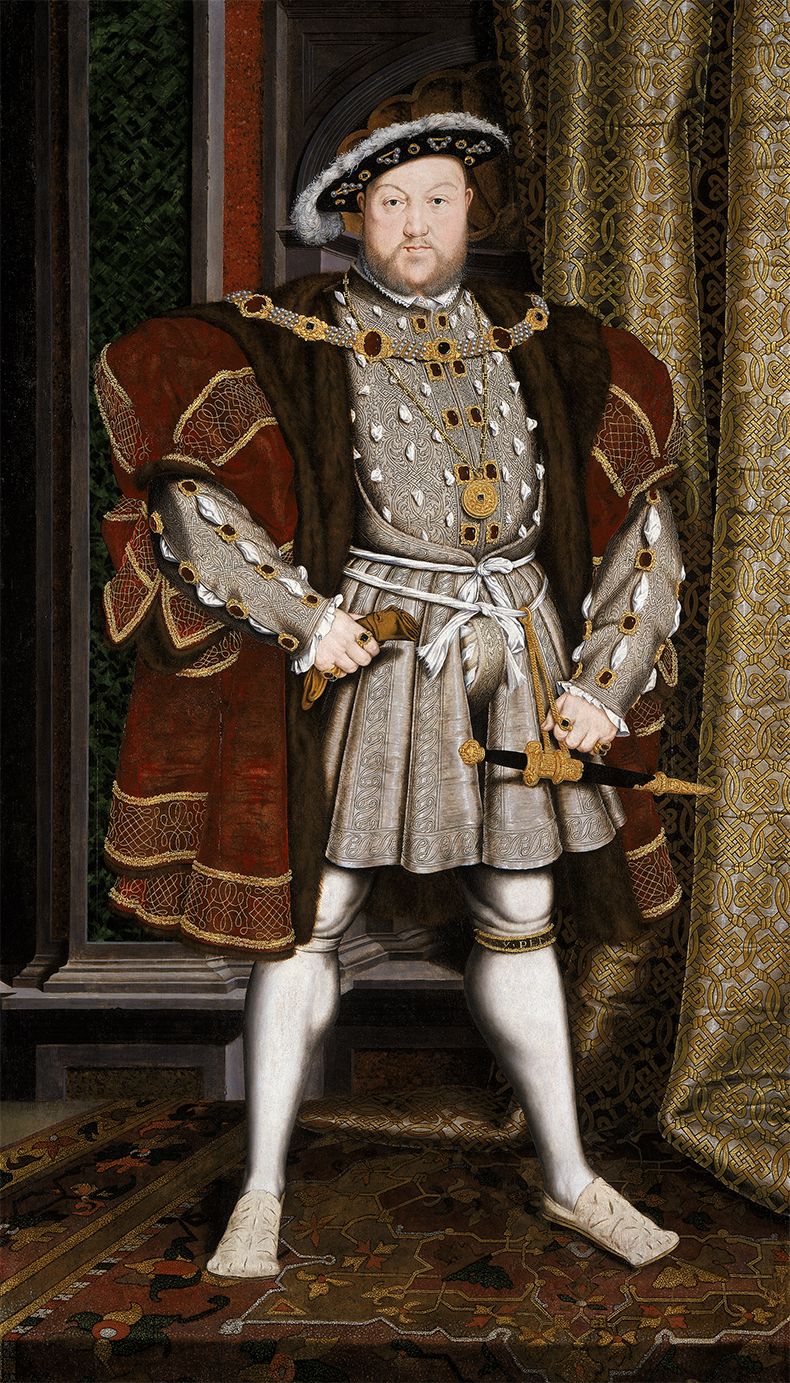
Henry VIII (1537), from the workshop of Hans Holbein the Younger. National Museums Liverpool/Walker Art Gallery
Walking through to the second gallery we are greeted by a fabulous informal triptych: Henry VIII, the earliest surviving version (alongside that at Petworth) of Holbein’s lost Whitehall portrait, is flanked by Nicholas Hilliard’s ‘Pelican portrait’ of Elizabeth I and a portrait of Margarite of Navarre attributed to Jean Clouet. Beside these lavish Tudor and Valois portraits is a display of Renaissance jewellery bequeathed to the gallery by the 19th-century goldsmith Joseph Mayer. This interplay between the lavish portraits and jewels is elegantly done, allowing visitors the chance to make their own connections.
On the adjacent wall, an array of portraits hang at double height. Among works by Giovanni Bellini, Gottfried Kneller and Michiel Jansz van Miereveld is a small portrait of Dawit II, Emperor of Ethiopia (1496–1540). A Christian ruler and ally of Portugal, Dawit was viewed by Europeans as a key ‘Defender of the Faith’ against Muslim North Africa. This intriguing painting is part of a series of Uomini famosi, famous people (women were also featured) that would have graced the walls of the palazzo of a learned Italian nobleman. The fame of this African ruler in Renaissance Italy and the evident nobility of the portrait raise important questions about perceptions of race in the early modern period. While the caption can only give a brief introduction to his story, Dawit’s presence should pique the curiosity of visitors.
Many of the most famous works in the collection are housed in the third gallery, which is by far the grandest. Titian’s Supper at Emmaus, on long-term loan from the Earl of Yarborough, and Murillo’s Virgin and Child sing from the vibrant, teal-painted walls, while Christ and the Women of Samaria, long attributed to Michelangelo, is given a more sceptical treatment. Some may miss the traditional red damask wall hangings that previously featured at the Walker – but the teal walls elevate a stunning Flemish tapestry of the Triumph of Fortitude.
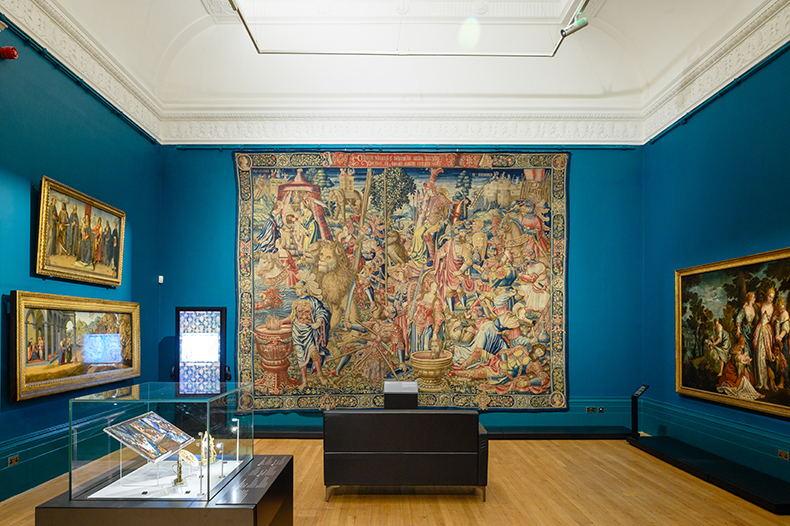
The new-look Walker Art Gallery in Liverpool. On the far wall is The Triumph of Fortitude (c. 1525), Brussels. Photo: Pete Carr; courtesy National Museums Liverpool/Walker Art Gallery
The three-year closure of the galleries has allowed for technical exploration and cleaning of many paintings – a process which, conservator David Crombie tells me, has provided more questions than answers. Take, for instance, a tondo of the Virgin and Child by a follower of Fillipo Lippi. In the late 19th century, a figure of the young John the Baptist was removed, apparently due to it being unoriginal, yet remnants of a halo have been found beneath the paint layer.
Least successful is the final gallery. It houses many of the largest baroque paintings, yet a mixture of the vitrines and two partition walls mean it feels cramped with no lines of sight. The introductory space suffers from this same cramped feeling and will surely become a bottleneck as visitors attempt to read the large panels on the collection’s links to slavery while school groups are chivvied along to see Holbein’s Henry VIII.
There is more to be done at the Walker – not least the creation of a modern catalogue, given that the last is 50 years out of date – and its treatment of new narratives is occasionally heavy-handed. But in general, the new hang does a good job of letting the art of the past speak to the present – allowing connections to be made without spoon-feeding, encouraging curiosity without satiating it and trusting visitors to think about the works on display as they will.
For more information about the Walker Art Gallery, visit National Museums Liverpool’s website.
Unlimited access from just $16 every 3 months
Subscribe to get unlimited and exclusive access to the top art stories, interviews and exhibition reviews.



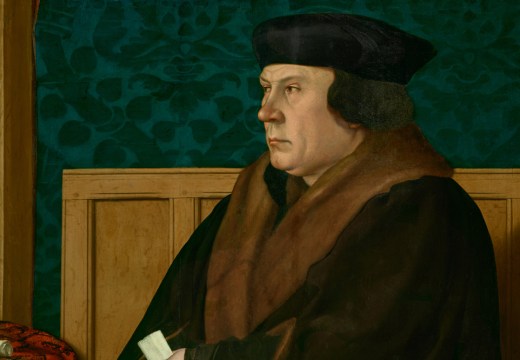
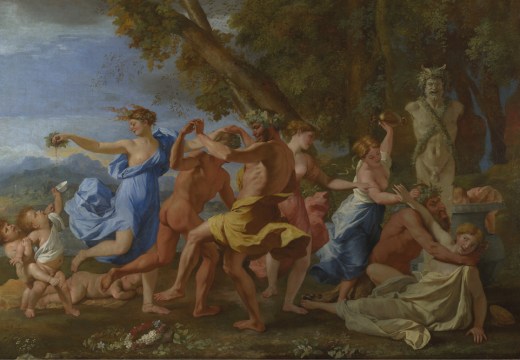









![Masterpiece [Re]discovery 2022. Photo: Ben Fisher Photography, courtesy of Masterpiece London](http://www.apollo-magazine.com/wp-content/uploads/2022/07/MPL2022_4263.jpg)
It’s time for the government of London to return to its rightful home